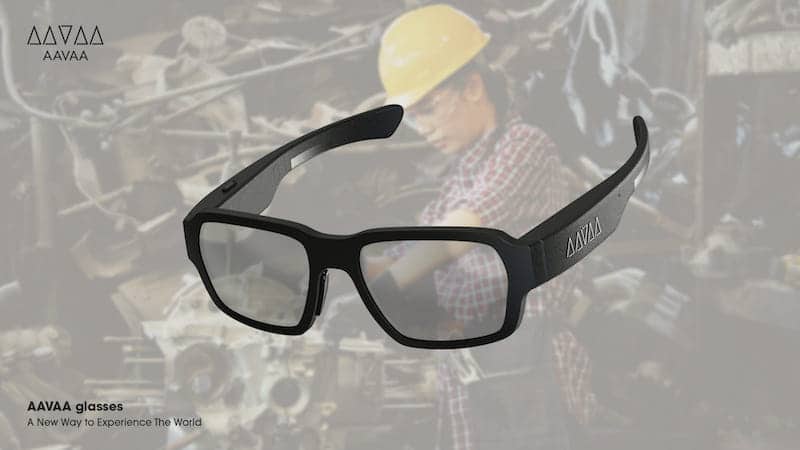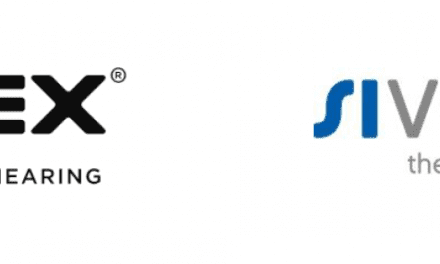In today’s rapidly advancing technological landscape, contactless devices have emerged as a viable solution to address challenges in the workplace faced by both the occupational health industry and individuals who are hard of hearing.
AAVAA, which develops brain-computer interface (BCI) technology for accessibility, hearing technology, and augmented reality and virtual reality solutions, has been developing a range of devices including headbands, smart glasses, headphones, and earbuds that interpret brain and biosignals and transform them into actionable commands. These solutions are capable of improving communication, increasing accessibility, and enhancing productivity. Below we share some of the advantages of such contactless devices in the workplace presented in the context of occupational health and their potential to empower people who are hard of hearing.
Applications for Contactless Devices in Occupational Health
The occupational health industry has embraced contactless devices to enhance safety and efficiency in the workplace, benefiting employers and employees. While familiar applications like hand sanitizer dispensers and contactless thermometers are widely used, more advanced systems, such as voice-activated devices, are also gaining popularity. These solutions streamline recording, control, and communication in the workplace, promoting efficient workflows and seamless collaboration through voice and gesture commands.
Another valuable application of contactless devices is their noise suppression capability. By isolating specific sounds and blocking out distractions, individuals can create a focused auditory experience even in noisy environments. Instead of just providing hearing protection, this technology has the potential to significantly improve concentration, productivity, and overall well-being in busy workspaces and public places. In essence, these innovative solutions not only create a safer work environment but also contribute to transforming modern workplaces into more efficient and productive spaces.
The Advancement of Brain-Computer Interface Technology
Years of research have led us, at AAVAA, to create a technology that enables devices to understand and react to user needs, with the mere use of subtle eye and facial movements. This new technology is transforming the use of brain and biosignals to drastically improve human device control.
At AAVAA, we are developing BCI technology such as glasses, headbands, and headphones that can be integrated into many workplace uniforms or protective gear, such as helmets and AR goggles, that allows for seamless integration, enhancing functionality without compromising comfort or safety.
Further reading: AAVAA Receives Grant from Canada
These occupational devices offer a transparency effect that allows the reduction of distracting noises, separating sound sources with an imperceptible delay, while ensuring situational awareness. By filtering out unwanted sounds, such devices will ensure clear and focused communication, enabling workers to stay engaged and perform at their best without being overwhelmed by auditory distractions.
Last but not least, unlike traditional communication methods that rely on voice commands, contactless devices offer an alternative approach that eliminates the need for verbal commands, a significant benefit in noisy work environments. By utilizing gestures, gazes, or other intuitive commands like subtle clenching, workers can now convey messages effectively without uttering a single word. This hands-free and voice-free communication feature not only enhances convenience but also addresses scenarios where noise levels make verbal communication difficult to interpret if not impossible, and can ultimately lead to errors, delayed responses, and frustration, as well as safety hazards. By using this kind of technology, industries could unlock new levels of productivity and safety, ultimately leading to improved outcomes and enhanced work environments.
Examples of BCI in the Workplace
Real-world examples illustrate the impact of contactless devices on occupational health. Factory workers, for instance, face the challenge of operating in noisy and busy environments while having their hands occupied with various tasks. Integrating contactless technology into augmented reality (AR) glasses, for example, can allow workers to interact with their surroundings and control devices without relying on voice commands or physical buttons. This innovation will enable them to activate and deactivate sensors, control robots, and even pilot drones with just a gaze, a blink, or by simply moving their head. The hands-free control provided by contactless commands not only empowers workers to accomplish tasks more seamlessly and navigate complex environments with ease, but also ensures a safer working environment. This means fewer injuries for employees and a cost savings for employers.

Augmented reality (AR) glasses allow workers to control devices without voice commands or buttons. Photo: AAVA
These real-world applications vividly demonstrate how contactless devices empower individuals to overcome workplace challenges and achieve optimal performance. By leveraging the capabilities of these devices, workers can interact with their environment effortlessly, accomplish tasks efficiently, and ensure their own safety in demanding work settings.
Contactless Devices and the Hard of Hearing
Being hard of hearing poses unique challenges in the workplace, chiefly communication barriers and limited access to information, which can hinder productivity and lead to exclusion. Contactless devices, however, have the potential to bridge these gaps.
These devices provide alternative channels for individuals who are hard of hearing to engage effectively with their colleagues and access crucial information. They monitor what sounds people are paying attention to, enhance those sounds, and suppress the distracting noises. The algorithm uses signal processing and AI to separate and enhance sounds, regardless of direction or source, for a superior audio experience in any environment.
By reducing reliance on spoken language alone, contactless devices enable people who are hard of hearing to actively participate in workplace interactions, ensuring inclusivity and equal opportunities for career advancement. With the aid of contactless devices, they can participate fully in collaborative tasks, contribute their expertise, and thrive in their professional environments.
By embracing contactless technology, employers can create an inclusive work environment that fosters open communication and breaks down barriers for those who are hard of hearing. These devices not only enhance productivity, but also promote a sense of belonging and empower individuals to reach their full potential. Integrating contactless devices into the workplace marks a significant step toward embracing diversity and creating equal opportunities for all employees.
Looking Ahead
As technology continues to advance, contactless devices are poised to evolve further. Artificial intelligence (AI) and machine learning will play a crucial role in improving these devices for both occupational health and those who are hard of hearing. AI-powered contactless devices can monitor biometrics such as heart rate, temperature, stress, and fatigue, providing a comprehensive health report with valuable insights into worker well-being and enabling proactive interventions.
Additionally, AI can decode gestures and attention cues, separating sound sources and fusing data to understand cognitive load. At AAVAA, we use AI to, among other things, help protect workers’ hearing while still allowing them to hear valuable alerts during their working hours. Or in other use cases, organizations can use our devices to help them understand when a worker is distracted while operating heavy machinery, redirecting their attention to increase safety or productivity. These advancements in sensor fusion and AI integration hold significant promise for enhancing the functionality and effectiveness of contactless devices in the future.
Contactless devices offer a multitude of benefits for all workers. By promoting workplace safety, enhancing productivity, improving communication, and fostering inclusivity, these devices have the potential to revolutionize the way we work. It is crucial for businesses and organizations to recognize the value of adopting contactless devices for their employees. By embracing this technology, we can create a safer, more accessible and inclusive work environment for all.
Naeem Komeilipoor, PhD, is a scientist and entrepreneur who is currently the chief technology officer of AAVAA, where he leads a team of engineers and scientists who work on recording brain bio-signals to track attention, eye movement, facial gestures, and subtle commands. AAVAA’s technology gives people control of what sounds they want to hear, even in noisy environments, by simply focusing on the sound source.





